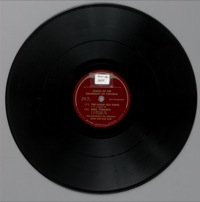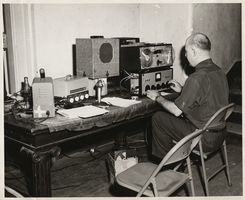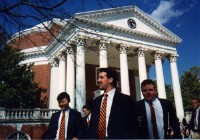Having sung the title work, I’ve always been curious about the Glee Club’s 1972 recording A Shadow’s on the Sundial, not least because it financed their 1972 concert tour. I hadn’t been able to find any references about it other than a newspaper ad and a passing mention in Virginius Dabney’s history of the 1920s through 1970s at Virginia, but today I struck paydirt.
There are a lot of bugs in the UVA library’s onsite access to digitized back issues of the student newspaper the Cavalier Daily, but you can get to the content by searching to find the article you want, browsing to the year that it was published, opening the file containing all the content for that date, and viewing source (the content is contained in the XML). For those who might not want to go through the hassle, here’s an excerpt from an article that appeared in the February 29, 1972 issue of the Cavalier Daily:
Profits from A Shadow’s on the Sundial, the Glee Club’s recent recording, will also go toward the tour. The record contains several traditional settings of English, French, and Italian madrigals, some of which will be sung in Europe. Two more serious works included are Francis Poulenc’s Lauds of St. Anthony of Padua, which the Club plans to sing in Padua, and Dietrich Buxtehude’s Cantate Domino, “Sing To God The Lord”.
“From Rugby Road to Vinegar Hill” (two verses only) and “Glory, Glory To Virginia” combine in a pleasant medley, offering a sharp contrast to the above pieces. Also included among Virginiana are new arrangements by recent Glee Club directors of “The Good Old Song,”, “Virginia Yell Song,” and “Ten Thousand Voices.”
A recent addition to the collection is “Vir-ir-gin-i-a,” by Professor Emeritus of English, Arthur Kyle Davis, Jr. Setting verses to a chorus by G.F. Handel, Professor Davis dedicated his new song on April, 1968, to the Jefferson Society. He sang the first performance of it on that occasion.
Portions of two other compositions that the Glee Club has come to regard as their own have been included. One is Randall Thompson’s Testament of Freedom which was dedicated to the Glee Club in 1943, having been composed for the Two Hundredth Birthday of Mr. Jefferson.
The other composition was written by former Glee Club director David H. Davis, entitled Summer Songs. The title of the album, A Shadow’s on the Sundial, is taken from the name of the concluding Summer Song in the group.
The album represents a lot of work on the part of the Club members. It seems the incentive involved has produced what many consider to be one of the best albums ever put out by the group. The album can be purchased for $5.25 at the corner stores, Newcomb Hall Bookstore, Stacy’s Music Ship, and HiFi House or through any member of the Glee Club.
With the group preparing to record a new album honoring the legacy of Songs of the University of Virginia, I thought the discovery of this description of Shadow was interesting.




